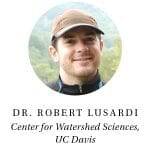THE DAMS
Removal of the four Klamath River dams is happening right now, and upon completion will be the largest dam removal project in the history of the United States and the largest salmon restoration project ever. Dam removal on the mainstem Klamath River, which flows through parts of Southern Oregon and Northern California, has been the subject of national attention for nearly two decades. Over 40 organizations, irrigation districts, and tribes support taking the dams out, and Tribal leadership has been a central component of the dam removal effort. The Yurok, Karuk, and Klamath River Tribes have led the effort to restore part of their cultural heritage and subsistence fishing for salmon and lamprey.
Owner:
Klamath River Renewal Corporation
Location:
Klamath River in California and Oregon
Completion Date:
1922 (Copco #1), 1925 (Copco #2), and 1964 (Iron Gate)
Size:
Iron Gate H 173 ft./L 740 ft., Copco #1 H 126 ft./L 415 ft., Copco #2 H 33 ft./L 278 ft.
Stakeholders:
Yurok Tribe, Karuk Tribe, Klamath Tribes, Trout Unlimited, American Rivers, Pacific Coast Federation of Fisherman’s Association, Northern California Federation of Fly Fishers, Salmon River Restoration Council, Sustainable Northwest, state and federal agencies, and more.
Land Acknowledgment
The Klamath dams are on the ancestral lands of the Yurok, Karuk, and Klamath tribes. The Yurok reservation is located at the mouth of the Klamath River and is today one of the largest tribal reservations in California. The Karuk tribe lives in its ancestral homelands along the middle section of the Klamath River. The Klamath tribes are located in southern Oregon in the Klamath basin, above the dams.The Problem
The Klamath dams block salmon and steelhead from reaching more than 300 miles of spawning and rearing habitat in the upper basin. Historically, the Upper Klamath-Trinity Rivers spring-run Chinook salmon were the most abundant run on the river. Today less than 3% remain, in large part because they cannot access historical habitat in the Upper Klamath Basin. Declining fish populations have caused immense suffering for the Tribes whose lands the Klamath flows through. While there is broad support for the removal of these defunct dams, there was some local opposition to the project, including from landowners around the current reservoirs and some local ranchers and farmers. However, the project is happening, and all four dams are expected to be removed by the end of 2024.
Current Situation
Klamath dam removal is happening right now! The smallest of the four dams, Copco #2, was removed during the summer of 2023, and reservoir drawdown behind the remaining three dams concluded in February 2024. By the end of 2024, all four dams will be removed, and restoration work will continue well beyond 2024. In 2016, a non-profit organization, the Klamath River Renewal Corporation (KRRC), was formed to take ownership of four PacifiCorp-owned dams (Copco #1, Copco #2, Iron Gate, and JC Boyle), and to oversee the dam removal process. That work includes restoring formerly inundated lands and implementing required mitigation measures in compliance with all applicable federal, state, and local regulations. In 2022, the Federal Energy Regulatory Commission (FERC) approved a license transfer to KRRC, transferring responsibility from the previous project owner, PacifiCorp. KRRC worked to secure permits, develop deconstruction plans, secure bids for the work of removing dams and restoring the lands under the reservoirs, and contract with a design-build firm to run the majority of the deconstruction project. In March 2023, KRRC officially broke ground on removal activities for the Klamath River dams. Resource Environmental Solutions (RES), in close collaboration with the Yurok Tribe and other partners, is leading restoration activities to help jumpstart the recovery of the landscape and to address habitat that will be accessible to fish after the dams are removed. Since 2019, RES, the Yurok Tribe, and others have been on the ground preparing for restoration. As of 2023, they had collected 17 billion native seeds sourced from the Klamath Basin or from plants grown in the Klamath Basin. In summer 2024, the remaining three dams will be demolished and removed.
Potential for Removal
One dam is already out, further removal processes are ongoing, and all four dams will be removed by the end of 2024. As dam removal proceeds, CalTrout continues our active involvement in the project. In addition to holding a board seat on the Klamath River Renewal Corporation, our teams also conduct baseline data studies in the basin with UC Davis and implement restoration projects on the Scott and Shasta rivers, the two largest tributaries to the Klamath River. Following dam removal, CalTrout Regional Director Damon Goodman will lead a study to answer the fundamental question “how many fish repopulate the Klamath after dam removal and where will they go?” by using sonar fish and radio telemetry tracking technologies. Removing the Klamath dams will be the largest dam removal project in in the United States, restoring river health and fish abundance by opening around 400 miles of habitat for fish that has been inaccessible for over 100 years. Dam removal will also provide social justice to tribal people who have relied on salmon for subsistence and who have lived along the river since time immemorial.





